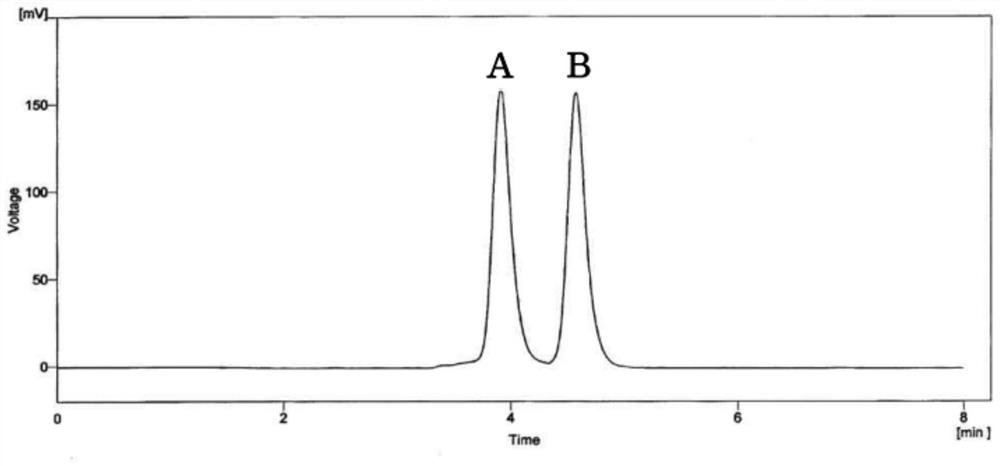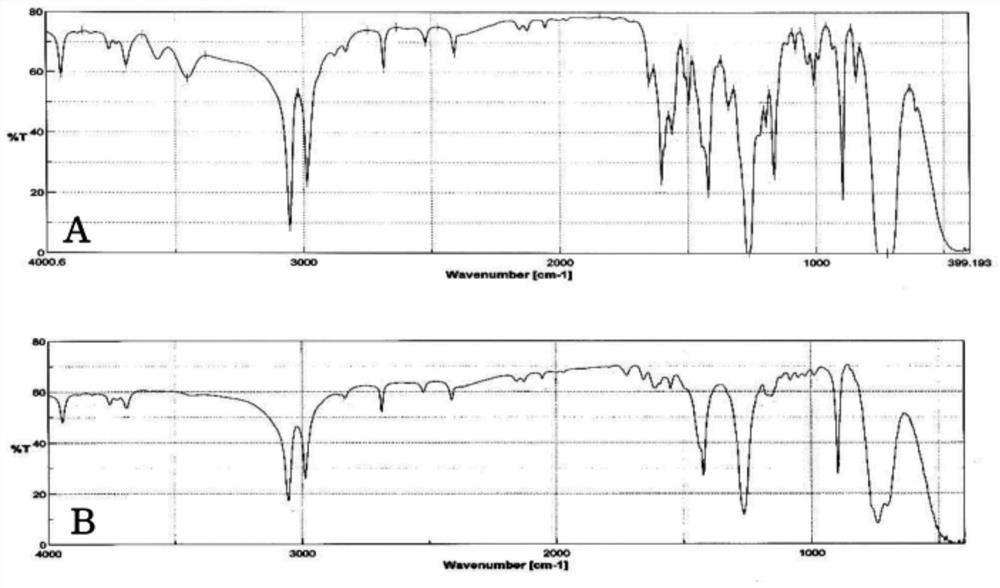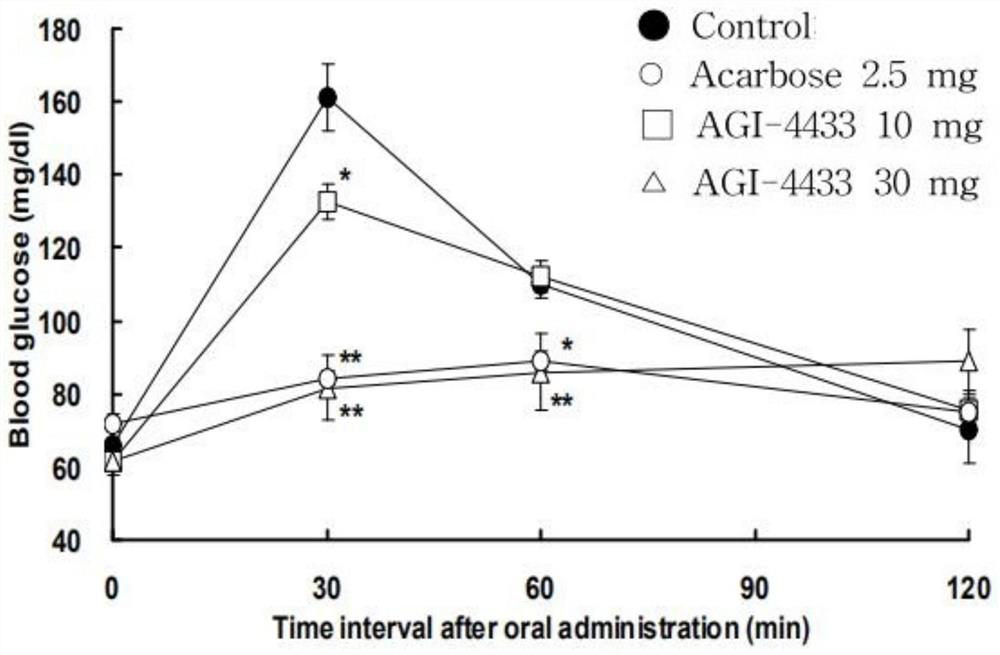Aromatic polyol compound and preparation method and application thereof
An aromatic polyol and compound technology, which is applied in the field of medicine and achieves the effect of inhibiting the decomposition of starch into glucose in the body, with high safety and reducing postprandial blood sugar.
- Summary
- Abstract
- Description
- Claims
- Application Information
AI Technical Summary
Problems solved by technology
Method used
Image
Examples
Embodiment 1
[0025] The aromatic polyol compounds provided in this example are compound 1 (AGI-6481) and compound 2 (AGI-4433) shown in formula I, and the molecular formula of compound 1 is C 21 h 20 o 10 , the structural formula is 1 in formula I, and the molecular formula of compound 2 is C 21 h 18 o 10 , the structural formula is 2 in formula I.
[0026]
[0027] 3 mM pNPG and p-nitrophenyl-β-D-glucopyranoside were used as reaction substrates. Add different concentrations of AGI-6481, AGI-4433, acarbose, voglibose and various sources of glucosidase into the phosphate buffer, react with the substrate at 25°C for 10 minutes, add the color reagent, Measure absorbance and calculate IC50. IC50 is defined as the concentration that inhibits glucosidase activity by 50% under the given conditions. As shown in Table 1, the aromatic polyol compound provided in this example can inhibit glucosidase from different sources, and the effect is similar to that of acarbose and voglibose.
[002...
Embodiment 2
[0037]The specific preparation process of the aromatic polyol compound in Example 1 is as follows, including the following steps: stirring and extracting 2kg of dried chili leaf powder with 20L of 70% ethanol at room temperature for 12 hours, and concentrating the extract under reduced pressure to obtain a total extract of 682.7 g. After the first extract obtained in this way was suspended in distilled water, an equal amount of methylene chloride and ethanol were added, and the mixture was fully shaken and stirred. The fractions were allowed to stand. After taking the organic solvent layer (dichloromethane-ethanol), an equal amount of dichloromethane was added and fractional distillation was carried out in the same manner. The organic solvent layer thus obtained was collected by rotary concentration under reduced pressure to obtain the first active fraction (144.6 g). A certain amount of the active part thus obtained is suspended in distilled water, only dichloromethane is a...
Embodiment 3
[0040] Such as Figure 5 As shown, 24 SD male rats were fasted for 12 hours and divided into four groups: control group, 10mg / kg AGI-4433, 30mg / kg AGI-4433, 2.5mg / kg acarbose orally, each group of rats At the same time, 2 mg / kg of sucrose was orally administered, and the rats in each group had similar fasting blood glucose levels before administration, and the blood glucose values of each group were measured before administration, 30, 60, 90, and 120 minutes after administration. The aromatic polyol compound AGI-4433 in Example 1 can reduce postprandial blood sugar in rats, comparable to acarbose.
PUM
 Login to View More
Login to View More Abstract
Description
Claims
Application Information
 Login to View More
Login to View More - R&D
- Intellectual Property
- Life Sciences
- Materials
- Tech Scout
- Unparalleled Data Quality
- Higher Quality Content
- 60% Fewer Hallucinations
Browse by: Latest US Patents, China's latest patents, Technical Efficacy Thesaurus, Application Domain, Technology Topic, Popular Technical Reports.
© 2025 PatSnap. All rights reserved.Legal|Privacy policy|Modern Slavery Act Transparency Statement|Sitemap|About US| Contact US: help@patsnap.com



